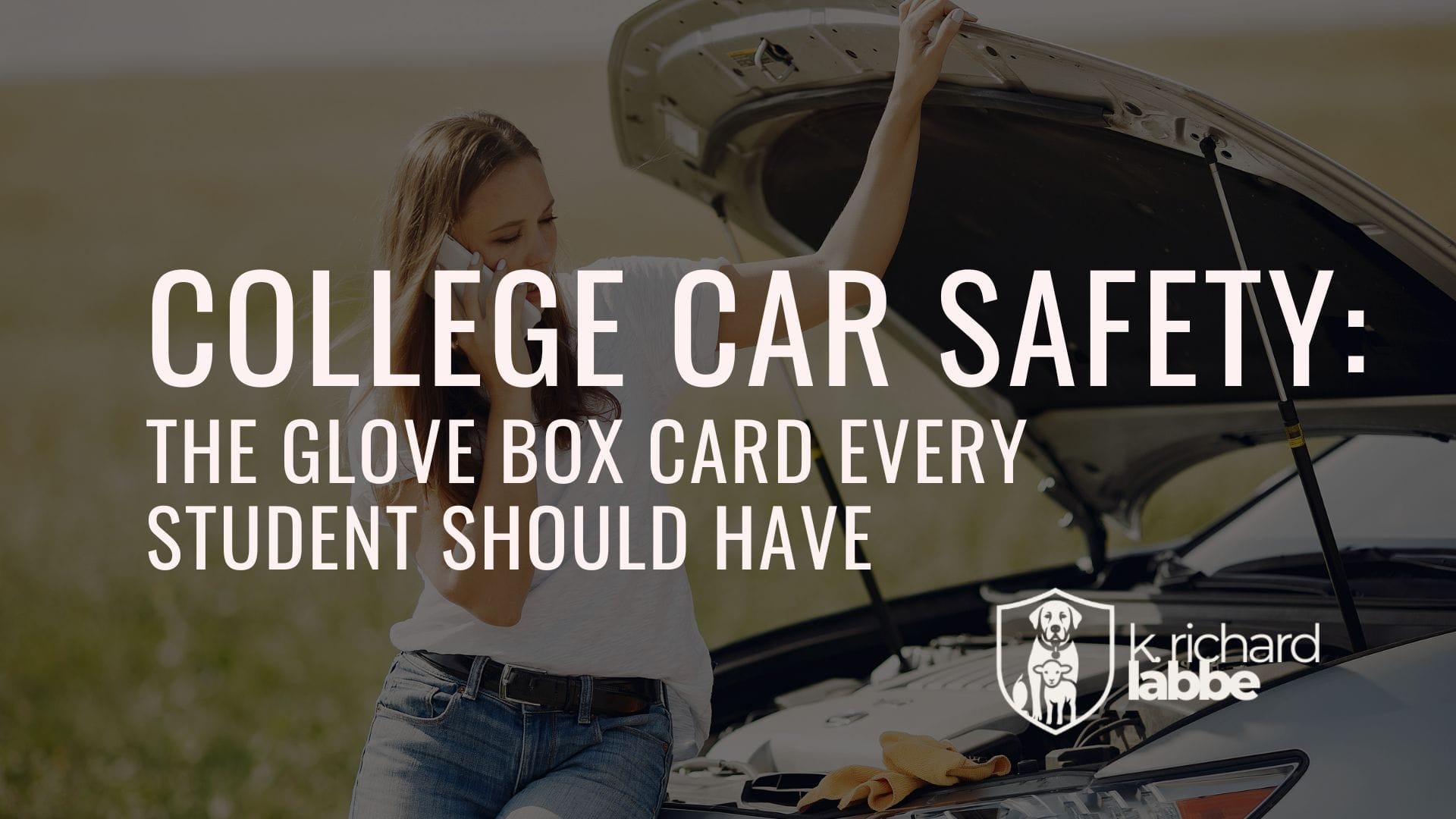College Car Safety: The Glove Box Card Every Student Should Have
A simple, printable glove box card and phone backup guide to help college students handle car breakdowns, accidents, or towing with calm and confidence.

When your son or daughter drives back to college this fall, whether they are commuting from home or traveling several states away, they are stepping into a season of new freedoms and new responsibilities.
We hope every trip will be easy. But cars have a way of breaking down at inconvenient moments.
- A flat tire on the way to class.
- A dead battery after a late-night study session.
- A minor accident in an unfamiliar part of town.
In those moments, clear thinking matters more than perfect driving. Stress, noise, and adrenaline can make it hard to remember the basics. That is why a single printed page in the glove box can be so helpful. It gives a student the right steps, in the right order, without having to search their phone or rely on memory.
Why a Glove Box Card Helps
Phones are wonderful, until the battery dies or nerves make it hard to focus. A printed card with key steps and phone numbers can make the difference between confusion and calm action.
It is also a quiet reminder that safety is not only about avoiding trouble. It is about being able to respond wisely when trouble comes.
What to Include
This version is short enough to glance over quickly but complete enough to guide them through a breakdown, accident, or towing situation.
COLLEGE DRIVER EMERGENCY CARD
(Keep this in your glove box or door pocket)
1. If Your Car Breaks Down
- Pull over to the shoulder or nearest safe place.
- Turn on hazard lights.
- Stay inside with seatbelt on if you are on a busy road. Exit only if it is safe.
- Call: Campus Security (if nearby) or Roadside Assistance: __________________.
2. If You Are in an Accident
- Check for injuries. Call 911 if anyone is hurt.
- Move to safety if possible.
- Exchange: Name, phone, address, insurance, license plate.
- Take photos of vehicles, scene, and driver’s license.
- Do not admit fault. Give only the facts.
- Call parents or guardian: __________________.
3. If Your Car Is Towed or Booted
- Look for posted signs or call the local police non-emergency line: __________________.
- Have ID, registration, and proof of insurance ready.
4. Essential Numbers
- Parents or Guardian: __________________
- Campus Security: __________________
- Roadside Assistance: __________________
- Local Police Non-Emergency: __________________
- Insurance Claims Line: __________________
5. Quick Safety Reminders
- Keep your phone charged. Carry a backup battery.
- Lock your car every time you leave it.
- Never accept rides from strangers.
- Trust your instincts. If something feels unsafe, leave or call for help.
How to Put It to Use
Print two copies. One goes in the glove box. The other stays in their dorm or apartment. Fill in every blank together before they leave. That conversation matters as much as the card itself. Talking through what to do in a tense moment gives them confidence they may not realize they need until the day comes.
For extra peace of mind, save a photo of the card to their phone or type the key points into the Notes app. A digital copy will not replace the paper one, but it can be a quick backup if they need the information when they are away from their vehicle. While you are at it, help them download their car insurance company’s app. Many of these apps allow drivers to request roadside assistance, file a claim, or pull up an electronic proof of insurance in seconds, which can be invaluable if the printed paperwork is lost or out of reach.
It is a simple step that can keep them safer on the road, no matter where college life takes them.
Stay safe. Be ready. Online and off.
Every effort has been made to ensure the accuracy and reliability of the information presented in this material. However, Labbe Media, LLC does not assume liability for any errors, omissions, or discrepancies. The content is provided for informational and educational purposes only and should not be considered professional advice. Readers are encouraged to verify any information before making decisions or taking actions based on it.
